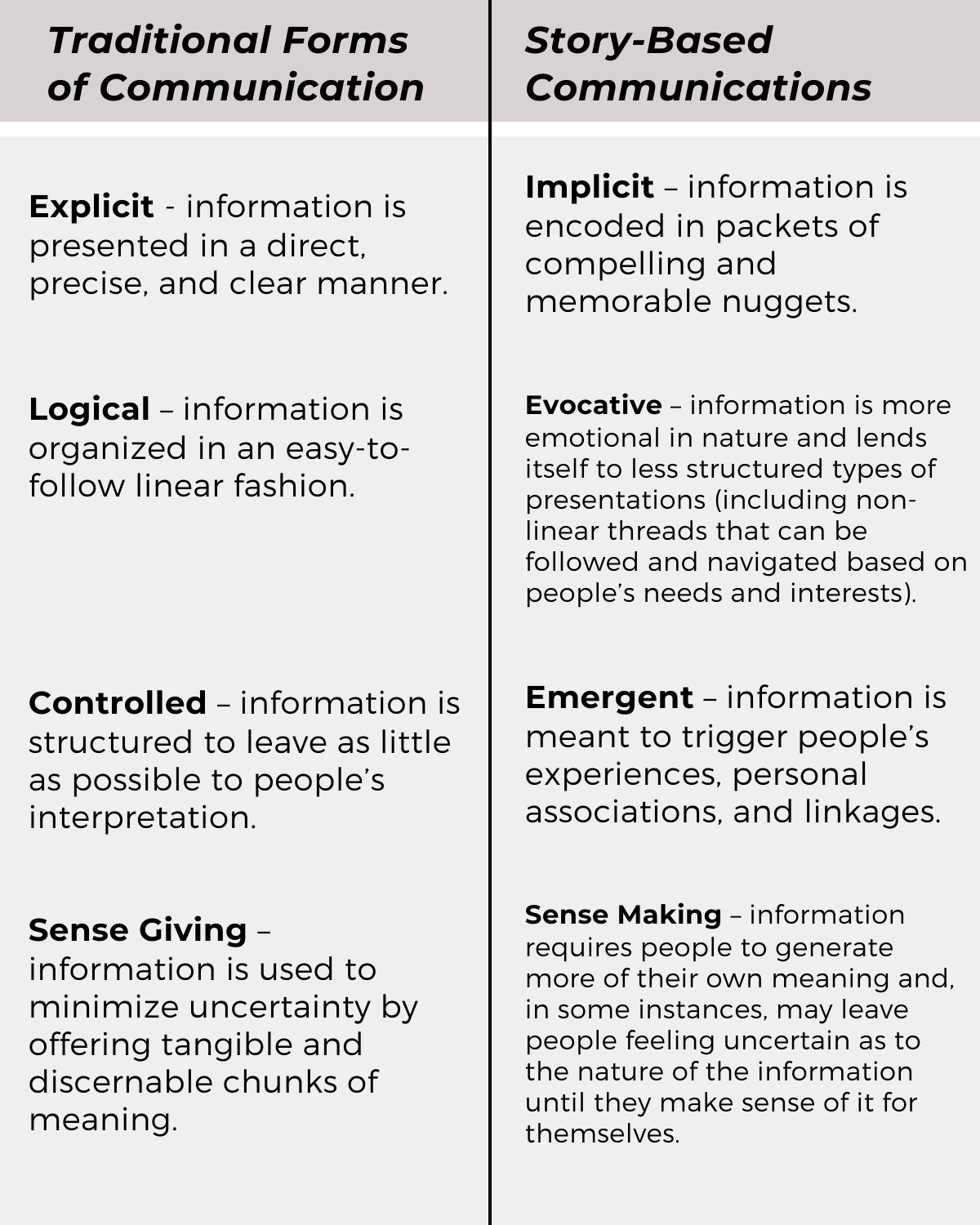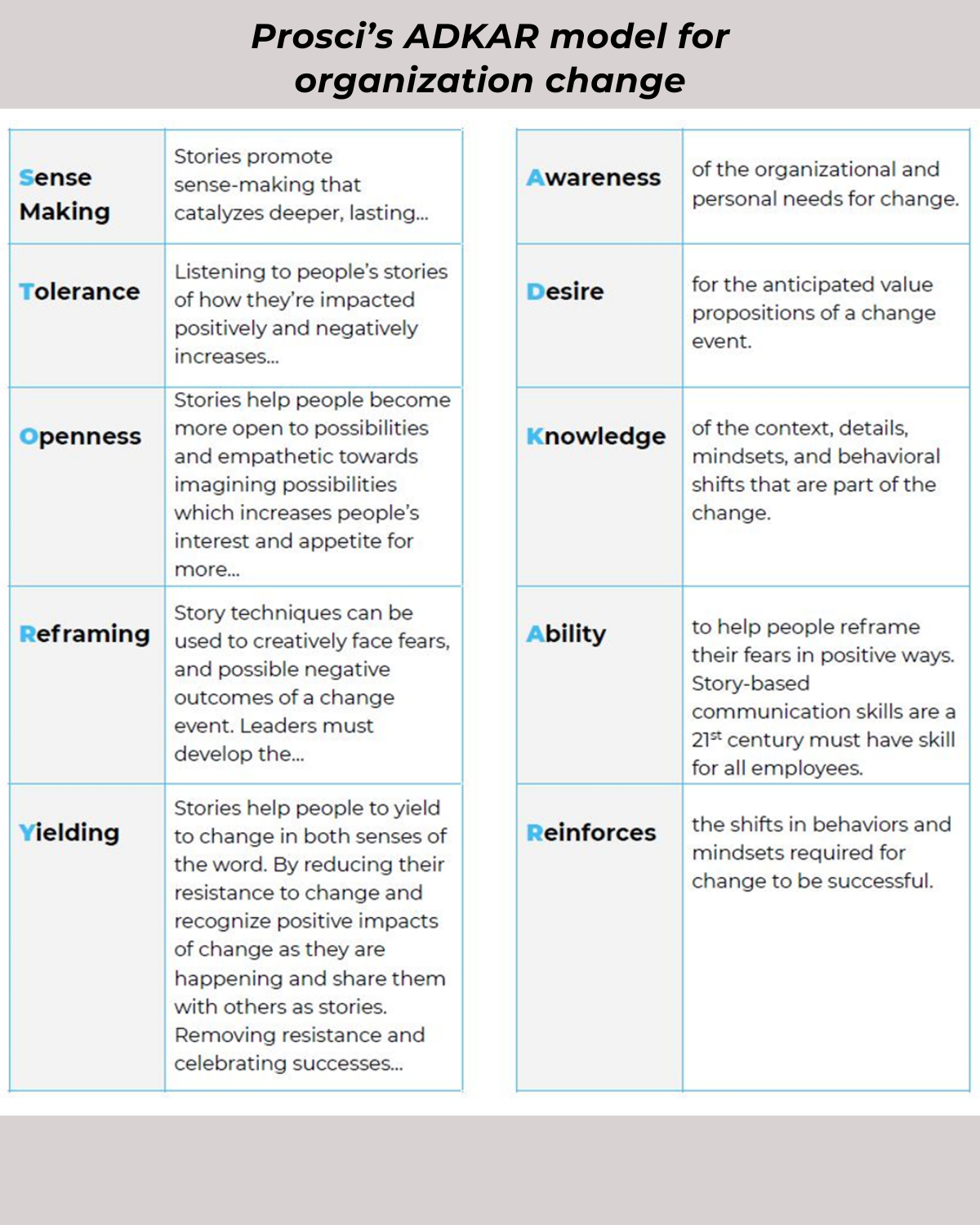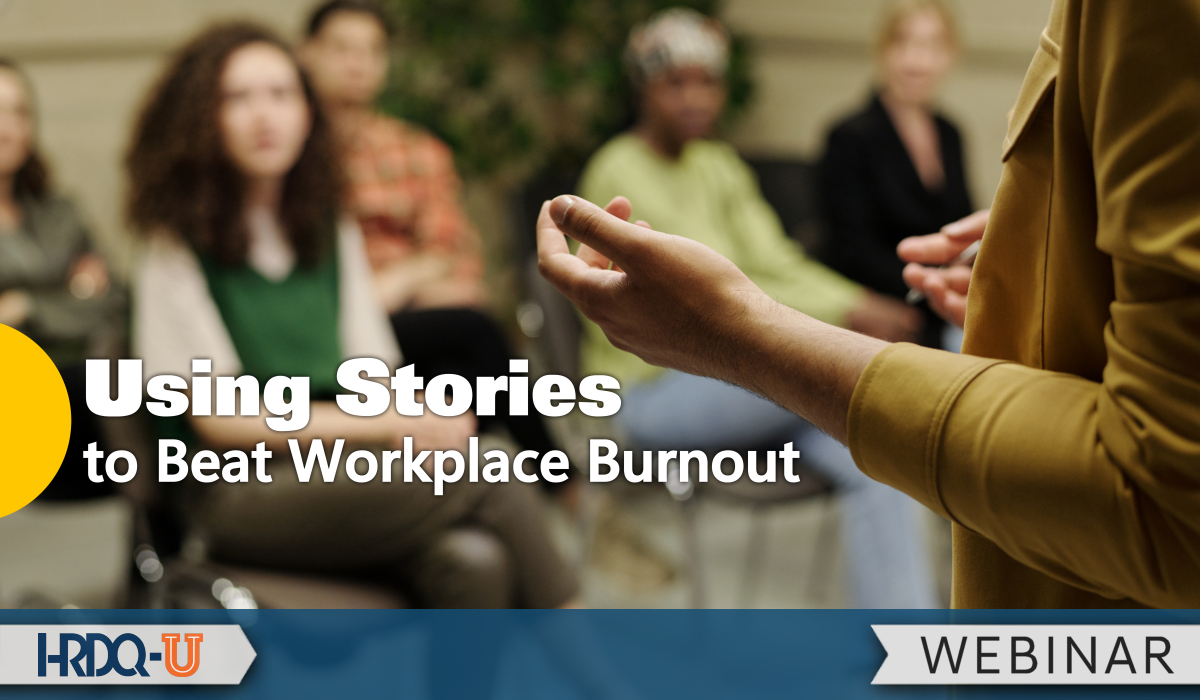Have You Seen This Happen Before?
Sound familiar? Imagine if the CEO and all of the leadership had a way of inciting broad, deep, and varied support for the change. What would it look like if change was driven through a peer-to-peer network of engaged change agents?
Like it or not, change has become synonymous with the contemporary perils of organizational life. While change is hardly a new phenomenon, the rate and cadence of change have become faster and more unpredictable. Periods of rest and stabilization between change spurts have become shorter. What makes matters worse is that the prevalence of social change is creating debilitating ripples of stress for many people across all dimensions of their lives.
What Can You Do to Increase Support as a Leader?
Let’s look at an often overlooked or misapplied capability for organizational change work: Storytelling. Developing personal and organizational story-based communication skills helps people navigate change.
Storytelling is fundamental to how people communicate, learn, and think. It empowers people in the throes of change to cope. Stories help people find meaning and use meaning to individually and collectively create templates to guide their actions.
Three Focuses for Organizational Change
There are three major focus areas of organizational change:
1. Engagement
How are you branding your change initiative? What activities are being used to bring people into your change agent network? How are you creating and structuring, governance, and decision-making both now and in the future for all things related to the change? (This includes governance opportunities for data/business processes ownership and accountability, decision making (we recommend decision making skills training), and sequencing and prioritization of future changes).
Use Storytelling to:
- Create working metaphors that encapsulate the spirit and value of the change being introduced.
- Architect memorable experiences that offer people an opportunity to taste and see the value of the change in dialogue with others. Give people opportunities to reflect on their experiences with each other and imagine its implications for their futures.
- Bring forward the experiences of people who are being impacted on a daily basis by the changes underway. Use stories as critical inputs into governance processes and activities.
2. Communication
What needs to be communicated? Who needs to know what and when? How often do you need to communicate? What channels and media will be used to communicate?
Use Storytelling to:
- Infuse communications with rich “word pictures” (If a picture is worth a thousand words, a story is worth a thousand pictures.)
- Build connections with your stakeholders by demonstrating empathy. Use stories to show you have listened and are willing and able to stand in people’s shoes as they go through a change event.
- Express emotions in a safe way that gives people permission to acknowledge their fears, hopes, frustrations, and dreams.
Storytelling in Change Communication
Communication perpetuates a myth of striving for the Holy Grail of clarity. We are enamored with the illusion and importance of exactitude. Our messages must be precise and leave little room for interpretation. Anything less is a failure of communication, especially in business settings where tolerance for ambiguity is paid lip service but pushed beneath the surface.
Be suspicious of good communication practices when working with stories. Does that sound preposterous? It may seem counter-intuitive, but there are different communication, learning, and thinking rules operating with story-based communications. Just as Newtonian physics accounts for how we interact with physical matter and quantum mechanical laws predict phenomena on the sub-atomic level, good communication practices operate differently between traditional and storied-based ones.
Here are some other counter-intuitive thoughts about how storytelling works in change communication.

3. Training & Enablement
What do people learn to be successful in adopting the change? How will you support people through the change process? How will you measure changes in behavior and adoption?
Use Storytelling to:
- Bring realism and specificity to training scenarios that are customized to the roles and day-to-day emerging realities for attendees.
- Activate peer-to-peer informal social learning to strengthen learning throughout the change journey.
- Augment data-driven change metrics with qualitative storied examples to enrich decision-making and increase executive awareness of the change’s impact.
Storytelling marries up well with the classic Prosci’s ADKAR model for organizational change:




























